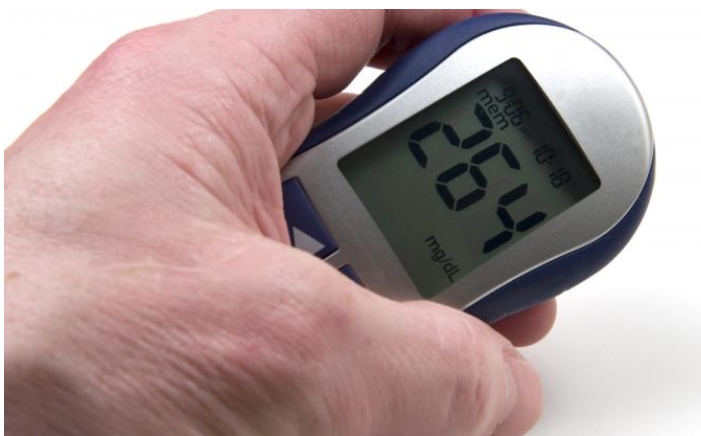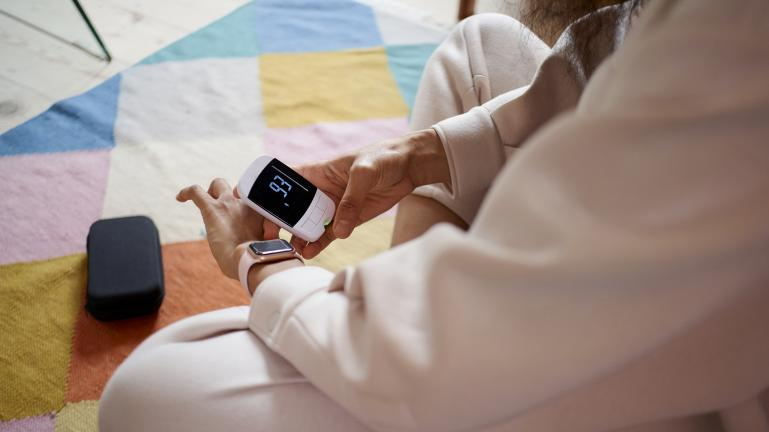Symptoms, causes and treatment of high blood sugar
High blood sugar affects people who have diabetes and who have not previously been diagnosed with diabetes. Many factors contribute to high blood sugar, including food choices and physical activity, having a disease, taking non-diabetic medications or not taking enough glucose-lowering medications.
It is important to treat high blood sugar, because it can become severe if left untreated and can lead to serious complications that require emergency care, such as a diabetic coma . In the long run, persistent high blood sugar, even if it is not severe, can lead to complications that affect the eyes, kidneys, nerves, and heart.
Symptoms of high blood sugar
High blood sugar doesn't cause symptoms unless glucose levels rise significantly above 200 milligrams per deciliter (mg/dL) or 11 millimoles per liter (mmol/L). Symptoms of high blood sugar develop slowly over several days or weeks. The higher the blood sugar levels, the more severe the symptoms.
First: Early signs and symptoms of high blood sugar
Recognizing early symptoms of high blood sugar can help you treat the condition right away. Watch:
Frequent urination.
Excess thirst.
blurred vision
fatigue .
headache;
Second: Signs and subsequent symptoms of high blood sugar
If high blood sugar is not treated, it can cause the formation of toxic acids (ketones) in the blood and urine (ketoacidosis). Among the signs and symptoms are:
Fruit-like odor on the breath.
Nausea and vomiting.
shortness of breath
Dry mouth.
Weakness.
confusion.
coma.
Abdominal pain.
A patient with diabetes should contact a doctor if the following symptoms appear:
If you're sick and can't keep food or fluids down in your stomach, you have a blood glucose level above 240 mg/dL (13 mmol/L) and ketones in your urine.
You have persistent diarrhea or vomiting, and are unable to eat some foods or drinks.
I had a fever that lasted for more than 24 hours.
Your blood glucose is higher than 240 mg/dL (13 mmol/L) even though you're taking diabetes medication.
You have trouble keeping your blood glucose within the desired range.
Causes of high blood sugar
During digestion, the body breaks down carbohydrates in foods such as bread, rice, and pasta, into multiple sugar molecules. Glucose is one of these sugar molecules, and it's a major energy source for the body. Glucose is absorbed directly into the bloodstream after eating, but it cannot enter the cells of most tissues without the help of insulin; It is a hormone secreted by the pancreas.
When the level of glucose in the blood rises, it sends a signal to the pancreas to secrete insulin . In turn, the insulin opens the cells so that glucose can enter them and provide them with the fuel they need to function properly. Any excess glucose is stored in the liver and muscles as glycogen.
This process lowers the amount of glucose in the bloodstream and prevents it from reaching dangerously high levels. Once the blood sugar level returns to normal, the rate at which the pancreas secretes insulin returns to normal as well.
Diabetes greatly impairs the effects of insulin on your body, whether that's because your pancreas doesn't produce enough insulin (type 1 diabetes) or because your body is resistant to the effects of insulin or doesn't make enough insulin to maintain a normal glucose level (type 2 diabetes). diabetes). As a result, glucose will build up in the bloodstream and may reach dangerously high levels (hyperglycemia) if not treated properly. Insulin and other medications are used to lower blood sugar levels.
Factors that contribute to high blood sugar
A number of factors can contribute to high blood sugar, including:
Not using oral diabetes medications or insulin in sufficient amounts.
Not injecting insulin properly or using expired insulin.
Not following your diabetes eating plan.
idleness.
Being sick or having an infection.
Use of certain medications, such as steroids.
Being injured or having surgery.
Experiencing emotional stress, such as family problems or challenges in the workplace.
Illness or stress can trigger high blood sugar because hormones that fight illness or stress can cause your blood sugar to rise. Even people without diabetes may develop high blood sugar during acute illness. But people with diabetes may need to take more diabetes medications to keep their blood glucose close to normal during illness or stress.
Complications of high blood sugar
First, long-term complications
Left untreated, high blood sugar can cause long-term complications. They include:
Cardiovascular disease .
Nerve damage (neuropathy).
Kidney damage (nephropathy) or kidney failure.
Damage to the blood vessels of the retina ( diabetic retinopathy ), potentially leading to blindness.
Blurry lens that is perfectly clear in its normal state (cataract).
Foot problems caused by nerve damage or poor blood flow, which can lead to serious infections.
Bone and joint problems such as osteoporosis.
Skin problems , including bacterial infections, bacterial infections, and non-healing wounds.
Tooth and gum infection.
Second: emergency complications
If your blood sugar is high enough or lasts for a long time, it can lead to two serious conditions.
Diabetic ketoacidosis.
Hyperosmolar syndrome associated with diabetes .
Diagnosing high blood sugar
Your doctor sets your target blood sugar range. For many people with diabetes, the target ranges are:
Fasting for at least eight hours (average fasting blood sugar) between 90 and 130 mg/dL (5 and 7 mmol/L).
Before main meals, between 70 and 130 mg/dL (4 and 7 mmol/L).
1 to up to 2 hours after meals less than 180 mg/dL (10 mmol/L).
Your target blood sugar may vary, especially if you're pregnant or have advanced complications of diabetes. Your target blood sugar range may also change as you get older. Reaching your target blood sugar range can sometimes be a challenge. But the closer you get to the range, the better you feel.
1. Constantly monitor blood sugar at home
Routine blood sugar monitoring with a blood glucose meter is the best way to make sure your treatment plan keeps your blood sugar within your target range. Check your blood sugar as your doctor recommends.
If you have signs and symptoms of severe high blood sugar, even if they are slight, check your blood sugar level. If your blood sugar is 240 mg/dL (13 mmol/L) or higher, use an over-the-counter urine ketones test kit. If the urine test is positive, your body may be making changes that could lead to diabetic ketoacidosis. You will need your doctor's help to lower your blood sugar safely.
2. Glycated hemoglobin (A1C) test
During your doctor's visit, he or she may ask you to have a glycated hemoglobin test. This blood test indicates the average blood sugar level for the past two to three months. It works by measuring the percentage of blood sugar bound to hemoglobin, the protein that carries oxygen to red blood cells.
A glycated hemoglobin level of 7 percent or less means that your treatment plan is working well and your blood sugar is regularly within its normal range. If your glycated hemoglobin level is greater than 7 percent, then your blood sugar, on average, is above its normal range. In this case, your doctor may recommend a change in your diabetes treatment plan.
Keep in mind that the normal range for glycated hemoglobin results may vary somewhat from laboratory to laboratory. If you see a new doctor or work with a new laboratory, it's important to keep this potential difference in mind when interpreting the results of your glycated hemoglobin test.
How often you need to have a glycated hemoglobin test depends on your type of diabetes and how well you control your blood sugar. Generally in most people with diabetes, this test is done two to four times a year.
Treating high blood sugar
First: home treatment
Talk to your doctor about controlling your blood sugar and understanding how different treatments can help keep glucose levels within your target range. The doctor may order the following treatment methods:
Get regular exercise to control your blood sugar. However, do not exercise if ketones are present in your urine. This can make your blood sugar rise even more.
Take your medications as instructed, and your doctor may adjust your medication dose or medication timings.
Reduce food intake and avoid sugary drinks.
Monitor your blood glucose as directed by your doctor.
Adjusting insulin doses to control high blood sugar.
Second: emergency treatment of severe hyperglycemia
If you have signs and symptoms of diabetic ketoacidosis and diabetic hyperosmolar syndrome, you may be treated in the emergency room or hospitalized. Emergency treatment can lower your blood sugar to a normal range. Treatment methods usually include:
fluid compensation.
Electrolyte replacement.
Insulin therapy.
In the event that the body's chemistry returns to normal, the doctor will think about the reasons that led to the triggering of severe high blood sugar. You may need additional treatments as needed. If your doctor suspects a bacterial infection, he or she may prescribe antibiotics. If you may have a heart attack, your doctor may recommend further heart tests.
Prevention of high blood sugar
Some of the following suggestions may help keep your blood sugar within your target range:
Follow a diabetes diet plan. If you take insulin or oral diabetes medication, it's important to be regular about the amount and timing of your meals and snacks. And the food you eat must be balanced with the action of insulin in your body.
Monitor your blood sugar level. This may involve checking your blood sugar level several times a week or several times a day and recording the results. Carefully monitoring your blood sugar level is the only way to make sure it's still within your target range. Your glucose readings should be noted when they are above or below your target range.
Take your medication that your doctor prescribed for you regularly.
Adjust your medication ration if your physical activity changes.
https://www.sehatok.com/%D8%A3%D8%B9%D8%B1%D8%A7%D8%B6-%D9%88%D8%A3%D9%85%D8%B1%D8%A7%D8%B6/%D8%A3%D8%B9%D8%B1%D8%A7%D8%B6-%D8%A7%D8%B1%D8%AA%D9%81%D8%A7%D8%B9-%D8%A7%D9%84%D8%B3%D9%83%D8%B1-%D9%81%D9%8A-%D8%A7%D9%84%D8%AF%D9%85-%D9%88%D8%A3%D8%B3%D8%A8%D8%A7%D8%A8%D9%87-%D9%88%D8%B7%D8%B1%D9%82-%D8%B9%D9%84%D8%A7%D8%AC%D9%87?fbclid=IwAR26bMzmjqV41ELhH_5hF2a1abiZDucy6rovIVLmHi-CbdoRVGAI3jAmku4



